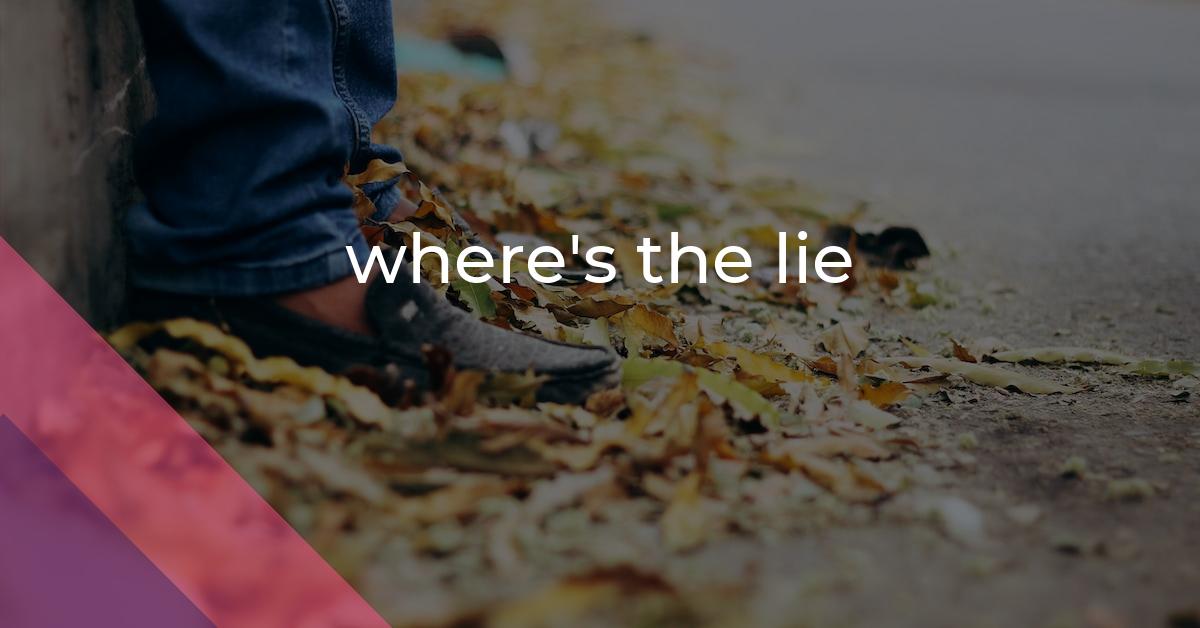where’s the lie: Idiom Meaning and Origin
What does ‘where's the lie’ mean?
The idiom where's the lie is used to express skepticism or disbelief towards a statement, indicating a belief that the statement is not entirely truthful.

Idiom Explorer
Unmasking Deceit
Where's the lie is an idiomatic phrase that originated in African American Vernacular English (AAVE) and has gained widespread usage in various contexts, particularly in online discourse. The phrase is often used to challenge or dispute a statement or claim made by another person, suggesting that the statement is false or lacking in truth.
The phrase "where's the lie" is typically used as a rhetorical question, emphasizing the speaker's disbelief or skepticism towards the statement being discussed. It is often employed when the speaker perceives a contradiction, inconsistency, or exaggeration in a claim, and seeks to point it out or challenge its validity.
One possible interpretation of the idiom is that it serves as a way to express doubt or suspicion, highlighting the need for evidence or proof to support a given statement. By using the phrase "where's the lie," the speaker seeks to challenge the validity of the claim and calls for concrete evidence to back it up.
This usage is common in online discussions, debates, and arguments, where individuals often express their differing opinions and perspectives. It allows people to question the truthfulness of a statement and require evidence to support it.
Frequently used in social media platforms like Twitter or Instagram, the phrase has become a concise and effective tool for expressing dissenting opinions or challenging statements in a succinct manner.
The rise in popularity of the idiom can be attributed to its usage by various influencers, celebrities, and online communities. The phrase has gained traction within these communities, often serving as a means of expressing solidarity, agreement, or support for a particular viewpoint. Its widespread usage has also led to the phrase being adopted in mainstream media and everyday conversation, transcending its origins in AAVE and becoming a part of popular culture.
where's the beef, a related phrase, carries a similar meaning to "where's the lie." It originated as a catchphrase in a Wendy's commercial during the 1980s. In the commercial, a group of elderly ladies examines a hamburger bun with a small amount of beef patty, questioning the truthfulness of the fast food industry's claims of large, quality hamburgers. Using the phrase, the ladies are implying that there is no substantial amount of beef, challenging the claim made by the restaurant. The phrase "where's the beef" became a popular catchphrase and metaphor for challenging the substance or validity of anything that appears to be lacking content or substance.
give the lie is another related idiom that is used to challenge or expose someone's false claim or statement. In contrast to "where's the lie," which is about questioning the truthfulness of a claim, "give the lie" focuses on actively disproving or discrediting it. It implies that the person providing the evidence or proof is giving the lie to the statement, proving it to be false. The idiom can be used to demand proof or evidence that contradicts a claim, thereby discrediting it.
believe it or not is a phrase used to introduce something surprising, incredible, or difficult to believe. It is typically used to preface a statement or story that challenges the listener's expectations or stretches the boundaries of credibility. While not directly related to "where's the lie," the phrase reflects a similar sentiment of questioning or challenging the status quo. It invites the listener to suspend their initial disbelief and consider the possibility of something extraordinary or unconventional being true. In this way, "believe it or not" serves as an invitation to challenge one's preconceived notions and consider alternative perspectives or possibilities.
The idiomatic phrase "where's the lie" has become a prominent feature of contemporary English, particularly in online discourse. Its usage allows individuals to challenge or dispute statements by questioning their truthfulness or validity. While the exact origin of the idiom remains uncertain, its rise in popularity can be attributed to social media platforms and online communities. The phrase serves as a concise and effective means of expressing doubt, skepticism, or disagreement, and has become integrated into mainstream culture.
Example usage
Examples of sentences using the idiom "where's the lie":
- "He said that he was the best player on the team, and honestly, where's the lie? He scores more goals than anyone else."
- "She told me that she had never skipped a day of exercise, and I thought to myself, where's the lie? She looks incredibly fit."
- "My friend claimed that she had the best apple pie recipe in the world, and after tasting it, I couldn't help but wonder, where's the lie? It was absolutely delicious."
The idiom "where's the lie" is commonly used to express agreement or acknowledgement of a statement or claim. It implies that the statement is so truthful or accurate that it is difficult to find any falsehood in it. It is often used in informal conversations or online discussions.
More "Slang" idioms



